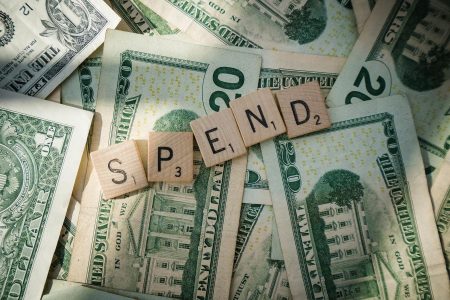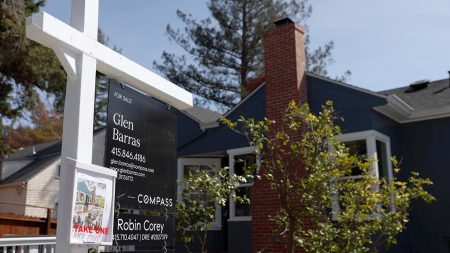While the pandemic threw the American economy for a loop and rising interest rates from 2022 to 2023 have proved detrimental to several sectors, one area of finance that shows some positive signs is student loan defaults. As of the latest data available on student loan default rates, the annual default rates for student loans at multiple types of institutions of higher education — all institutions, public institutions, private nonprofit institutions, and for-profit institutions — are all at historic lows.
Student Loan Default Rates: The Latest Data
The latest data on student loan default rates from the National Center for Education Statistics (NCES) is its report from 2021 breaking down the number of postsecondary students who entered the student loan repayment phase, the number of students who defaulted within a 3-year period, and 3-year student loan cohort default rate, by level and control of institution for the fiscal years 2010 through 2018.
The good news is student loan default rates are down historically. Analyzing both the default rates at all institutions of higher education as well as specifically four-year institutions reveals that student loan default rates have been on a steady decline since their highs back in 2010. For example, the three-year cohort default rate for all institutions total was 14.7% in 2010. By the fiscal year 2018, that default rate was down to just 7.3%, meaning that it was more than halved over the years. Here’s a list of the student default rates for all institutions for each fiscal year we have data for:
- 2010 student default rate: 14.7%
- 2011 student default rate: 13.7%
- 2012 student default rate: 11.8%
- 2013 student default rate: 11.3%
- 2014 student default rate: 11.5%
- 2015 student default rate: 10.8%
- 2016 student default rate: 10.1%
- 2017 student default rate: 9.7%
- 2018 student default rate: 7.3%
Private nonprofit colleges consistently display the lowest student loan default rates. In 2010, the three-year cohort default rate at all private nonprofit institutions was 8.2% — its highest point historically yet still well below the corresponding three-year cohort default rate at all public institutions, which was 13% in 2010. As of 2018, the default rate at all private nonprofit colleges was down to a historic low of 5.2%. At four-year private nonprofit colleges, the three-year cohort default rate was even lower, at 5% for fiscal year 2018.
Below is a chart detailing the trends in student loan default rates by institution type, from 2010 to 2018:
One of the most obvious patterns is the exceptional nature of student loan default rates of cohorts who attended private for-profit colleges. In fiscal year 2010, the three-year cohort default rate at private for-profit institutions was an astounding 21.8%. It then fell precipitously over the next three years, reaching a temporary low of 15% in 2013. But then it rose again slightly, before declining substantially from 2017 — when the default rate was 14.7% — to 2018 — when it reached a historic low of 11.2%. Zeroing in on four-year private for-profit institutions specifically reveals that the student loan default rate was even worse for these types of schools in 2010 — 22.1% versus 21.8% — than it was for all types of private for-profit institutions.
Below is a chart detailing the trends in student loan default rates for four-year institutions, from 2010 to 2018:
It is once again private for-profit institutions that experienced the greatest decline in student loan default rates over the years — from 22.1% in 2010, down to 9.8% in 2018 — when examining four-year institutions specifically. But they remain much higher compared to other types of institutions. For example, student loan default rates at four-year private for-profit schools have reached a historic low of 9.8% in fiscal year 2018. Yet that’s almost double the corresponding default rate for four-year private nonprofit schools (5% in 2018) and it’s similarly higher than the default rate for four-year public schools (5.4% in 2018).
All types of four-year higher educational institutions experienced marked declines in student loan default rates from fiscal year 2017 to 2018. This episode of year-over-year decline broke up what was looking like a new plateau established between 2013 and 2017. Default rates barely moved in those years, with four-year private nonprofit institutions, for example, experiencing no change from its rate in fiscal year 2013 of 6.5%, to the same figure in 2017. Meanwhile, for four-year public institutions, the change from 2013 to 2017 in default rates was negligible, a mere two percentage points, from 7.3% in 2013 to 7.1% in 2017.
The move from fiscal year 2017 to 2018, therefore, marks a significant pivot in the overall trend. Whereas the three-year cohort default rate for all four-year institutions fell by 10.7% over four years, from 8.8% in 2013 to 7.8% in 2017, in the one-year period 2017-2018 alone, the default rate declined by 23.7%, from 7.8% in 2017 to 6% in 2018. Four-year public institutions, private nonprofit institutions, and private for-profit institutions all display comparable declines in their student loan default rates from 2017 to 2018.
The Future of Student Loan Default Trends Is Very Uncertain
Although the latest data from the NCES is encouraging, the low student loan default rates could easily change for the worse and do so quickly. Considering that the fiscal year with the highest rate of student loan defaults was 2010 — the year when the unemployment rate in the United States peaked, despite the Great Recession technically ending in 2009 — it seems likely that a future economic downturn will send default rates back up.
And, of course, there is the trend of ever-increasing levels of student loan debt in the U.S. According to FRBNY Consumer Credit Panel/Equifax
EFX
Read the full article here













